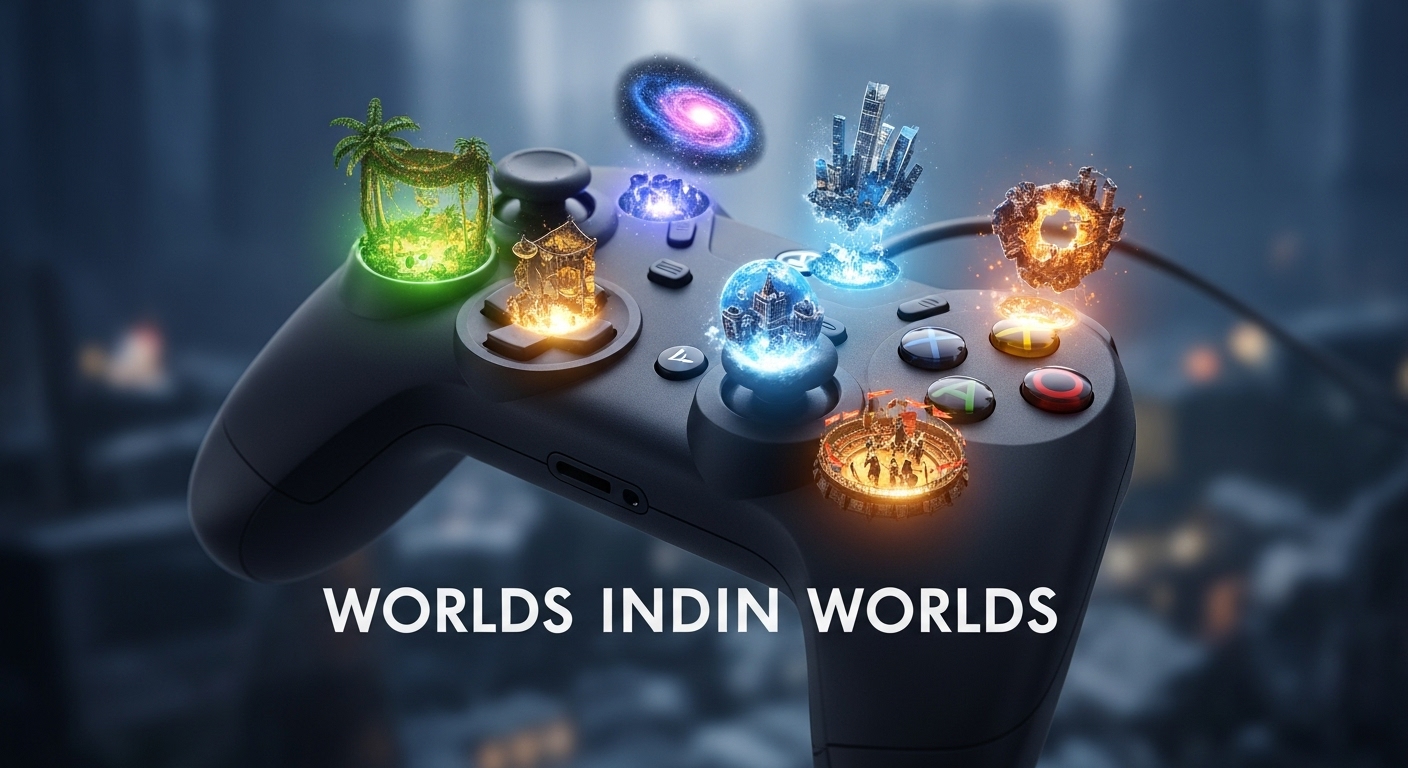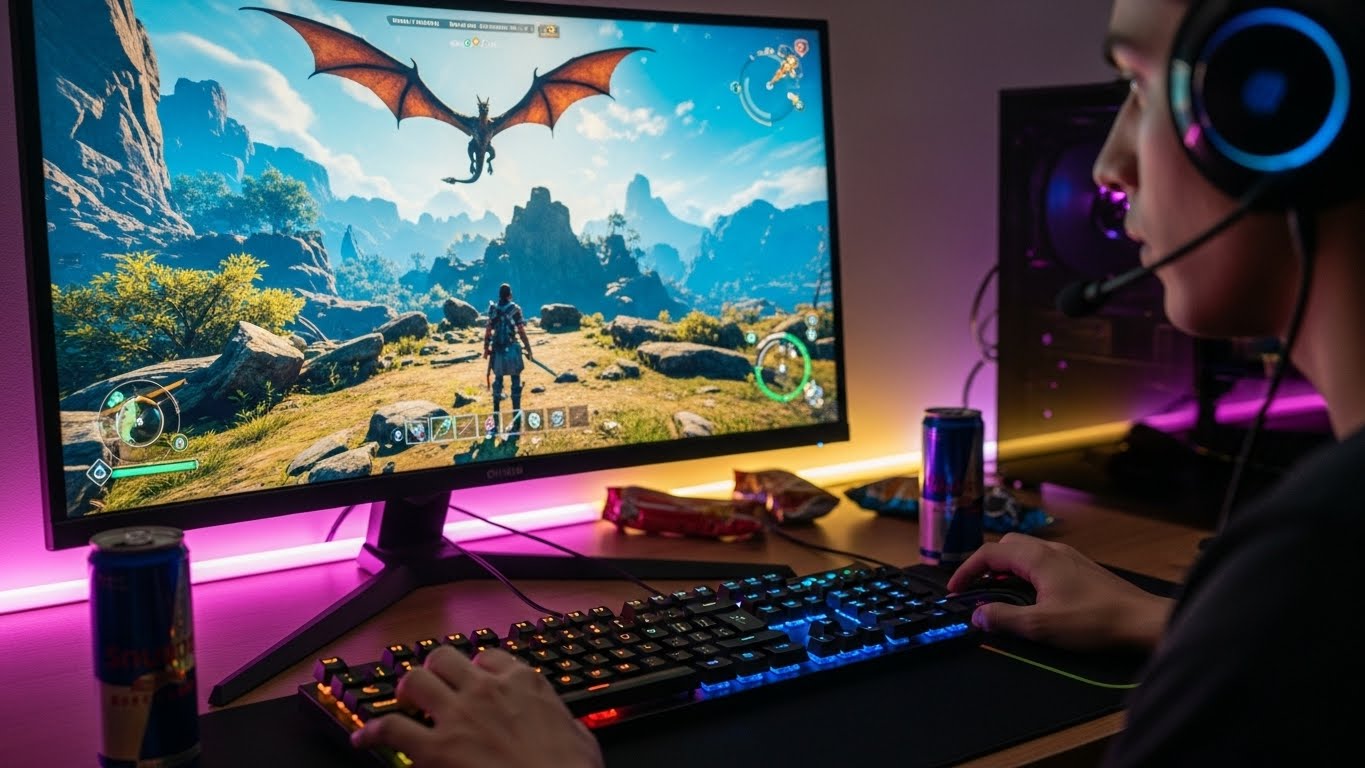Introduction
Gaming is no longer a niche hobby reserved for a small group of enthusiasts. It has transformed into a global cultural and economic powerhouse that influences art, technology, entertainment, education, and even human interaction. Over the decades, gaming has evolved from simple 8-bit adventures into vast interactive experiences that rival cinema in scope and storytelling. The industry’s journey, from early arcade cabinets to virtual reality worlds, is a fascinating reflection of human creativity and technological progress.
The evolution of gaming is not merely a story of better graphics and faster consoles. It is a chronicle of how imagination, innovation, and community have shaped a form of entertainment that connects billions of people across the world. To understand gaming today, we must explore its past, its transformative rise, and its ongoing impact on culture, society, and technology.
The Dawn of Digital Play
The roots of gaming can be traced back to the mid-twentieth century, long before home consoles or online multiplayer experiences existed. In the 1950s and 1960s, computer scientists and engineers began experimenting with interactive entertainment on primitive machines. Games like “Spacewar!” and “Tennis for Two” were simple by today’s standards but revolutionary at the time. They laid the groundwork for the idea that computers could be used for fun as well as function.
By the 1970s, arcade machines began to emerge, bringing video gaming into public spaces. Titles such as “Pong” and “Space Invaders” became cultural sensations, attracting players from all walks of life. These games were easy to learn yet difficult to master, a combination that kept players coming back for more. The era marked the first wave of gaming addiction and competition, as people crowded around arcade cabinets to top the high score charts.
The Rise of Home Consoles
As technology advanced, the dream of bringing the arcade experience into the living room became a reality. The 1980s saw the birth of home consoles like the Atari 2600, Nintendo Entertainment System, and Sega Master System. These machines revolutionized entertainment by giving players control of their experience at home.
The console era also birthed some of gaming’s most iconic characters—Mario, Link, Sonic, and others—who would become household names and cultural icons. Developers began to explore storytelling, creativity, and gameplay innovation, turning games into art forms rather than simple pastimes. The limitations of early hardware forced developers to rely on imagination, which led to distinctive visual styles and memorable soundtracks that are still cherished today.
The Golden Age of Innovation
The 1990s are often considered the golden age of gaming. This was the decade when technology caught up with creative ambition. The transition from 2D to 3D graphics opened new possibilities for exploration and immersion. Games like “Super Mario 64,” “The Legend of Zelda: Ocarina of Time,” and “Final Fantasy VII” set new standards for storytelling and world-building.
The emergence of powerful consoles such as the PlayStation and Nintendo 64 gave players cinematic experiences at home. Meanwhile, the rise of PC gaming introduced new genres like real-time strategy, simulation, and first-person shooters. Online multiplayer began to take shape, connecting players across the world through early networks and local connections.
This period also established gaming as a legitimate form of competition. Esports began its early life through games like “Quake” and “StarCraft,” where players demonstrated incredible skill, strategy, and reflexes. The idea that gaming could be a sport, not just a pastime, was born.
The Birth of Online Communities
With the spread of the internet in the early 2000s, gaming entered a new era of connectivity. Online multiplayer transformed the way people played and interacted. No longer limited by geography, players could now team up, compete, and communicate in virtual worlds that existed beyond the constraints of the physical world.
Games such as “World of Warcraft,” “Counter-Strike,” and “Halo” became not just titles but communities. Players formed clans, friendships, and rivalries that often extended beyond the game itself. The internet became a digital playground where millions could coexist, collaborate, or compete.
This period also saw the emergence of digital distribution. Instead of purchasing physical cartridges or discs, players could download games directly to their devices. This revolutionized accessibility and convenience, allowing indie developers to share their creations with global audiences without the backing of major publishers.
The Explosion of Genres and Creativity
As gaming matured, so did its creative diversity. Developers began experimenting with narrative depth, emotional storytelling, and innovative mechanics. Genres multiplied, blending and evolving into new forms. Open-world games allowed players to explore vast digital landscapes at their own pace, while role-playing games invited deep character customization and moral decision-making.
Independent developers became a driving force in this creative renaissance. Without the constraints of large corporations, indie creators explored personal and artistic themes. Games like “Journey,” “Undertale,” and “Celeste” proved that emotional depth and artistic vision could be just as captivating as big-budget spectacle.
The success of such titles demonstrated that gaming could be more than entertainment—it could be a medium of expression. It could tell stories about loss, love, identity, and struggle in ways no other form of art could replicate.
Gaming as a Cultural Force
Today, gaming is one of the most influential cultural forces on the planet. It shapes fashion, music, film, and even language. Iconic game franchises have inspired movies and TV shows, while popular streamers and esports athletes have become celebrities in their own right.
The gaming industry’s influence extends far beyond entertainment. It fosters creativity, teamwork, problem-solving, and technological literacy. Schools and educators have begun integrating gaming elements into learning, recognizing its potential to engage and motivate students.
Streaming platforms and social media have also turned gaming into a form of performance. Millions of viewers tune in daily to watch others play, comment, and compete. This rise of content creation has blurred the line between player and entertainer, creating an entirely new form of digital culture.
The Business of Gaming
The gaming industry has grown into a multi-billion-dollar economic powerhouse, surpassing film and music combined. Major corporations invest heavily in game development, marketing, and technology, while smaller studios continue to push creative boundaries.
Console wars between giants like Sony, Microsoft, and Nintendo have driven innovation and competition, benefiting players through better hardware and diverse experiences. Meanwhile, mobile gaming has opened the market to billions of users worldwide, making gaming more accessible than ever before.
Monetization models have evolved as well. From traditional one-time purchases to free-to-play games supported by microtransactions and battle passes, developers experiment with ways to sustain long-term engagement. While controversial, these models reflect how gaming has adapted to modern economic realities and player expectations.
Esports: The Competitive Revolution
Esports is one of the most remarkable phenomena of the modern era. What began as small LAN tournaments has evolved into global championships filling entire stadiums. Competitive gaming has become a legitimate career path for skilled players, with professional organizations, sponsors, and massive prize pools.
Games like “League of Legends,” “Dota 2,” and “Valorant” have created global communities united by competition and passion. Esports requires strategy, reflexes, teamwork, and dedication, mirroring traditional sports in intensity and structure.
The spectacle of esports has also changed how audiences experience games. Fans watch matches, follow teams, and celebrate victories with the same fervor as any major sporting event. Broadcasting, commentary, and analytics have become integral parts of this growing ecosystem.
The Social Dimension of Gaming
Beyond competition, gaming serves as a social hub where people connect, communicate, and form friendships. In a digital age often criticized for isolation, gaming communities provide spaces for interaction, collaboration, and shared joy.
Online multiplayer games have created virtual societies where players build, trade, and create together. Platforms that support voice chat and social features have turned gaming into a medium for human connection. Many people have met lifelong friends, partners, or collaborators through games.
During global crises, such as the pandemic, gaming offered a refuge for millions who sought connection and escape. Virtual spaces replaced physical ones, allowing people to socialize safely and meaningfully.
The Role of Technology in Gaming’s Growth
Technological innovation has always been the backbone of gaming’s evolution. Every new generation of hardware and software expands what is possible. Graphics, sound design, and artificial intelligence have reached levels of realism once thought impossible.
Modern gaming harnesses technologies like virtual reality, augmented reality, and cloud computing to deliver unprecedented immersion. Players can now step into fully realized worlds, experience lifelike interactions, and collaborate in real time across continents.
Artificial intelligence enhances gameplay, making enemies more responsive and environments more dynamic. Cloud gaming services eliminate the need for expensive hardware, bringing high-end experiences to more people. These advancements demonstrate how gaming continuously pushes technological boundaries forward.
The Art of Storytelling in Games
One of the most profound transformations in gaming has been the rise of narrative-driven experiences. Games are no longer defined solely by mechanics or graphics—they are now vehicles for storytelling, emotion, and philosophical reflection.
Titles such as “The Last of Us,” “Red Dead Redemption,” and “God of War” demonstrate the emotional potential of interactive storytelling. Players are not passive observers; they are participants whose choices and actions shape the narrative. This interactivity gives gaming a unique power to evoke empathy and introspection.
Unlike films or novels, games allow players to inhabit the story, to live the journey rather than merely witness it. The ability to explore moral choices, relationships, and consequences in a personal way sets gaming apart as a uniquely human art form.
Representation and Diversity in Gaming
As gaming reaches global audiences, the demand for representation and inclusivity has grown. Developers are increasingly aware of the importance of reflecting diverse identities, cultures, and perspectives in their stories and characters.
Modern games now feature protagonists from a wide range of backgrounds, challenging stereotypes and expanding the medium’s cultural depth. This inclusivity strengthens gaming’s role as a universal form of expression, accessible and relatable to people everywhere.
However, challenges remain. The industry continues to face issues of toxicity, discrimination, and unequal opportunities. Yet, with growing awareness and community activism, gaming is steadily becoming more welcoming and inclusive.
Gaming and Mental Health
Gaming’s impact on mental health has been widely debated, but modern research paints a more balanced picture. While excessive play can lead to problems, gaming in moderation offers numerous psychological benefits.
For many, games provide a sense of achievement, relaxation, and escape from daily stress. Cooperative play fosters social support and teamwork. Story-driven games can even help players process emotions and develop empathy.
Therapeutic gaming—using games to treat anxiety, depression, and cognitive disorders—is a growing field. Games designed for mindfulness, memory training, and stress relief are proving that gaming can contribute positively to mental well-being.
The Future of Gaming
The future of gaming promises even greater innovation. Artificial intelligence, virtual reality, and augmented reality will continue to blur the line between the digital and physical worlds. The metaverse concept—persistent virtual spaces where players can live, work, and play—could redefine how we experience entertainment.
Advances in haptic feedback, eye tracking, and neural interfaces will create even deeper levels of immersion. Games will not only look real but feel real, engaging all the senses. At the same time, cloud-based technologies will make these experiences more accessible, removing the need for expensive hardware.
The boundaries between gaming, social media, and creative expression will continue to merge. Players will become creators, shaping their worlds and narratives collaboratively. Gaming will remain a powerful tool for storytelling, education, and connection in an increasingly digital society.
Conclusion
From simple pixels to breathtaking virtual worlds, gaming has come a long way. What began as a technological curiosity has evolved into one of humanity’s most dynamic and influential art forms. It connects people, tells stories, inspires creativity, and drives innovation in countless fields.
Gaming’s power lies in its universality—it transcends borders, languages, and generations. It is both a reflection of who we are and a vision of what we can become. Whether we play for fun, competition, or discovery, we are all part of a global community shaped by imagination and interaction.
As technology continues to advance, one thing remains certain: gaming will continue to grow, evolve, and inspire. It is not merely a pastime but a cultural force that defines the digital age—a celebration of creativity, connection, and the infinite possibilities of play.



